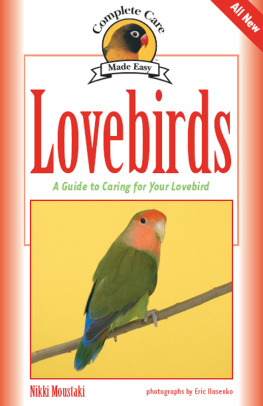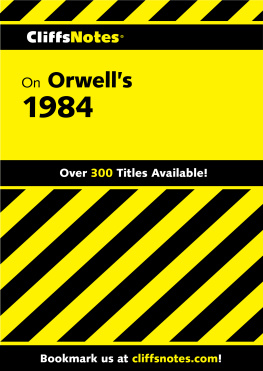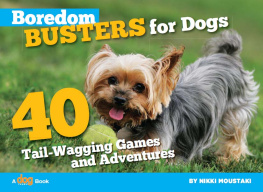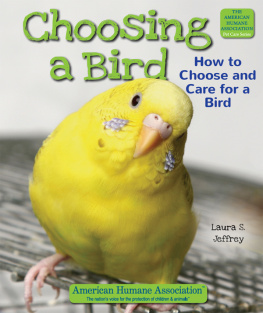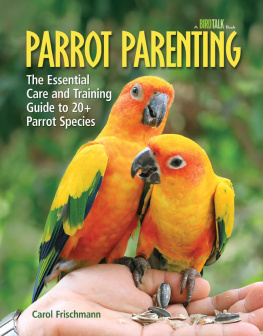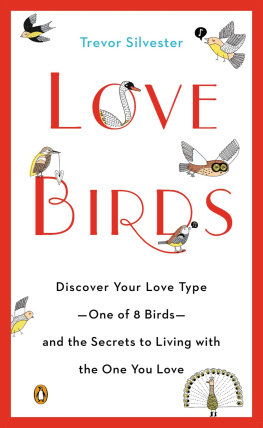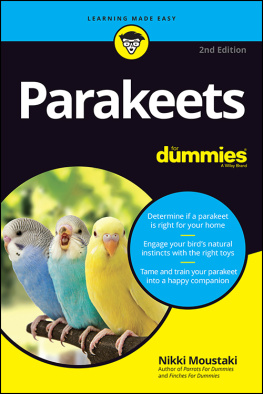Nikki Moustaki - Lovebirds
Here you can read online Nikki Moustaki - Lovebirds full text of the book (entire story) in english for free. Download pdf and epub, get meaning, cover and reviews about this ebook. year: 2018, genre: Home and family. Description of the work, (preface) as well as reviews are available. Best literature library LitArk.com created for fans of good reading and offers a wide selection of genres:
Romance novel
Science fiction
Adventure
Detective
Science
History
Home and family
Prose
Art
Politics
Computer
Non-fiction
Religion
Business
Children
Humor
Choose a favorite category and find really read worthwhile books. Enjoy immersion in the world of imagination, feel the emotions of the characters or learn something new for yourself, make an fascinating discovery.
- Book:Lovebirds
- Author:
- Genre:
- Year:2018
- Rating:5 / 5
- Favourites:Add to favourites
- Your mark:
- 100
- 1
- 2
- 3
- 4
- 5
Lovebirds: summary, description and annotation
We offer to read an annotation, description, summary or preface (depends on what the author of the book "Lovebirds" wrote himself). If you haven't found the necessary information about the book — write in the comments, we will try to find it.
Lovebirds — read online for free the complete book (whole text) full work
Below is the text of the book, divided by pages. System saving the place of the last page read, allows you to conveniently read the book "Lovebirds" online for free, without having to search again every time where you left off. Put a bookmark, and you can go to the page where you finished reading at any time.
Font size:
Interval:
Bookmark:
Acknowledgments
Thanks to everyone at I-5 Press who worked on this book, especially my lovely and irrepressible editor, Jarelle Stein.
Nikki Moustaki
Appendix
Lovebird Societies
Here are some lovebird societies where you can go for information on the care and breeding of lovebirds.
THE AFRICAN LOVE BIRD SOCIETY
PO Box 142
San Marcos, CA 92069
http://www.africanlovebirdsociety.com
THE AFRICAN LOVEBIRD SOCIETY OF AUSTRALIA
PO Box 422
Pennant Hills, NSW 1715
http://www.nb.au.com/ALBS/
Other Online Sources
AMERICAN FEDERATION OF AVICULTURE
http://www.afabirds.org
ANIMAL NETWORK
http://www.animalnetwork.com
GOOD BIRD!
http://www.goodbird.com
PARROT PAGES
http://www.parrotpages.com
This is a pair of peach-faced lovebirds, one of the most popular species available today.
T HE FRENCH CALL THESE BIRDS LES INSPARABLESTHE inseparables. Their genus name is Agapornis, which stems from the Greek agape, meaning love, and the Greek ornis, meaning bird. To the average person, they are lovebirds, a name that conjures images of affectionate birds sitting side by side on a swing, their heads together, calm and sweet. The romantic myth about lovebirds is that they will pine away and die if housed alone, and although this belief is incorrect, it shows how powerful our associations are with this small parrot. Lovebirds are wonderful pets, but they are also among the most aggressive and territorial of the commonly kept parrots. They are feisty to a fault, but they can also be incredibly sweet and loyal, making them great hands-on pets for the owner who has the patience to deal with a little bit of mischief.
What Is a Lovebird?
Lovebirds are small parrots. On average, they are about six inches long and have typical parrot features. They are acrobatic and active. The powerful beak is large in comparison with the head and is shaped like a hook (lovebirds are considered hookbills). The nostrils are barely visible in the narrow strip of naked skin at the base of the upper beak, known as the cere. Lovebirds have zygodactyl feet, which means that the feet are formed in an X shape, with two toes in front and two behind. This allows the bird to climb and hang as well as perch. Lovebirds waddle like ducks when walking on the ground instead of hopping, as other small birds do. The tail is short and bluntly rounded rather than long and tapered.
All but one species of lovebirds have large dark eyes that remain dark through adulthood. This blue black-masked lovebird also has a prominent white eye ring.
Lovebirds have large eyes that generally stay dark as the birds mature; juveniles in most parrot species are hatched with dark eyes that lighten as the birds mature. Of the nine species of lovebirds, only one, the rare Agapornis swindernianus, the black-collared lovebird, has a light eyebright yellowin the adult. Unlike other parrots, eye color cant be used to help determine the age of a lovebird. However, immature birds typically have black lines and smudges on the beak for about three months, and their plumage colors are subdued compared with the brighter plumage of adults.
Unlike budgies and cockatiels, who are the only species in their genera, there are nine species of lovebirds in the genus Agapornis. Many of the species in the genus can interbreed, which shows how closely they are related, in contrast to budgies, who cant successfully interbreed with any other species.
Lovebird History
The first lovebird known to Europeans was the red-faced lovebird. This bird was written about in the 1600s and was the first lovebird imported to Europe in the 1800s. The remaining eight species were discovered and imported to Europe over the next two hundred years, where they found their way into zoos and the pet trade. In particular, the peach-faced, the Fischers, and the masked lovebirds did particularly well in captivity.
Unfortunately, the remaining six of the nine species of lovebirds never became widely established in the fancy (hobby) as breeding birds. They either need special breeding conditions or dont adapt well to caged conditions and the food being offered in captivity. Some are shy, such as the Madagascar lovebird, and dont make the best hands-on pets.
The captive-bred lovebirds we have today resulted from the importation of wild birds from Africa, with nearly all of the species entering the market in Europe and eventually the United States in the early 1900s. Tens of thousands of lovebirds were exported from Africa each year, with many of the birds failing to adapt and dying as a result of capture. Some lovebirds, such as the Abyssinian and Nyasa, werent as abundant as the others within their very small habitats but were still prey for local trappers. In some cases, populations collapsed, and species of lovebirds went from abundant to rare in a matter of a decade or two. Today, some species, such as the Abyssinian and Nyasa, are likely to be found only in protected national parks and forests.
Discovering Lovebirds
E UROPEAN SCIENTISTS DISCOVERED THE NINE SPECIES of lovebirds more than two hundred years ago. The following list gives the nine scientific names of the lovebirds, the person who named them, the year they were first written about, and where they were first found.
Red-faced lovebird: Agapornis pullarius Linnaeus, 1758, probably Ghana
Madagascar or grey-headed lovebird: Agapornis canus Gmelin, 1788, Madagascar and Mauritius
Abyssinian lovebird: Agapornis taranta Stanley, 1814, Ethiopia
Peach-faced lovebird: Agapornis roseicollis Vieillot, 1818, Cape Province, South Africa
Black-collared lovebird: Agapornis swindernianus Kuhl, 1820, Liberia
Black-masked lovebird: Agapornis personata Reichenow, 1887, Tanzania
Fischers lovebird: Agapornis fischeri Reichenow, 1887, Tanzania
Nyasa lovebird: Agapornis lilianae Shelley, 1894, Malawi
Black-cheeked lovebird: Agapornis nigrigenis Sclater, 1906, Zambia
This is a young yellow black-masked lovebird; the head will darken as the bird matures.
The United States and many European countries passed restrictive laws against imported parrots in the 1970s and increased the restrictions again in the early 1990s. Today, few imported lovebirds are available legally in the United States. So there is no need to worry that buying lovebirds is harming the wild lovebird population somewhere in Africa. The lovebirds sold today were hatched and raised in captivity.
Lovebirds in the Wild
All nine lovebird species are found in mainland Africa except for one, the Madagascar lovebird (Agapornis canus), which is found on the large island of Madagascar off the southeastern coast of Africa. In general, lovebirds are flocking parrots of the open forests and grasslands of central Africa, extending from the western side of the continent (where they often are just isolated populations left over from when lovebirds were more generally distributed in the area) to near the Red Sea in the northeast and south to the area of the African Great Lakes (Victoria, Tanganyika, Malawi) in central Africa and to Namibia and Cape Province, South Africa, in the southwest.
A single green black-masked lovebird perches in a tree. In the wild, lovebirds tend to gather in small flocks.
Their Habitat
In the wild, lovebirds tend to spend the day in groups of five to twenty birds or more, resting and feeding in treetops. Lovebirds also feed on the groundon grain crops and wild plants and grassesand they can be a pest to farmers. They fly in fast spurts and are generally noisy when flying. Most mate for life but will take another mate if one is lost. In captivity, pairs also mate for life, but pairs in lovebird colonies have been known to have love affairs on the side.
Next pageFont size:
Interval:
Bookmark:
Similar books «Lovebirds»
Look at similar books to Lovebirds. We have selected literature similar in name and meaning in the hope of providing readers with more options to find new, interesting, not yet read works.
Discussion, reviews of the book Lovebirds and just readers' own opinions. Leave your comments, write what you think about the work, its meaning or the main characters. Specify what exactly you liked and what you didn't like, and why you think so.

